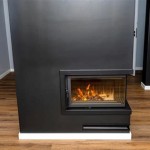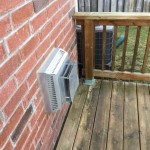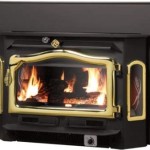Blower for Wood Fireplace Insert: Enhancing Efficiency and Comfort
Wood fireplace inserts are designed to improve the efficiency of traditional masonry fireplaces by creating a closed combustion system. However, even the best wood fireplace insert can benefit from an added component: a blower. A blower, also known as a fan, can dramatically improve heat distribution, leading to a more comfortable and evenly heated living space. This article will delve into the purpose of a blower for a wood fireplace insert, its benefits, types, factors to consider when choosing one, and proper maintenance.
Understanding the Function of a Blower
A wood fireplace insert converts an open fireplace into a more efficient heating appliance. Instead of losing a significant portion of heat up the chimney, the insert retains and radiates a larger percentage of the heat into the room. However, even with an insert, the radiant heat alone might not be sufficient to heat larger areas, and heat tends to concentrate near the fireplace itself. This is where a blower becomes invaluable. Its primary function is to circulate the heated air more effectively throughout the room.
The blower typically works by drawing cooler air from near the floor level, passing it over the heated surfaces of the firebox or heat exchanger within the insert, and then forcing the warmed air back into the room. This forced convection process significantly speeds up the heating of the room and helps to distribute the heat more evenly, reducing temperature stratification (where the ceiling is significantly warmer than the floor).
Without a blower, the heat output from a wood fireplace insert relies primarily on radiant heat and natural convection. Radiant heat only warms objects that are directly in its line of sight, and natural convection is a relatively slow process. A blower actively combats these limitations, resulting in a more consistent and comfortable temperature throughout the living space.
Key Advantages of Using a Blower
The benefits of incorporating a blower into a wood fireplace insert system are extensive and contribute significantly to improved heating performance and overall user experience. These advantages extend beyond simply increasing heat output and encompass aspects of convenience, energy efficiency, and safety.
Enhanced Heat Distribution: As previously discussed, the primary benefit is improved heat distribution. By actively circulating the heated air, a blower eliminates cold spots and ensures that warmth reaches all corners of the room. This is particularly important in larger rooms or open-plan living areas where radiant heat alone may not be sufficient to provide adequate warmth.
Increased Heating Efficiency: While the blower itself doesn't generate heat, it maximizes the efficiency of the fireplace insert. By circulating the heated air more effectively, it allows the insert to heat the room faster and more consistently, potentially reducing the amount of wood needed to maintain a comfortable temperature. This translates to fuel savings and reduced environmental impact.
Improved Comfort: A blower contributes significantly to overall comfort levels. By reducing temperature stratification, it creates a more uniform and comfortable environment. This is especially beneficial in homes with high ceilings, where heat tends to rise and accumulate near the ceiling, leaving the lower levels feeling cooler.
Faster Room Heating: The forced convection provided by a blower allows the room to heat up much faster than relying solely on radiant heat or natural convection. This is particularly advantageous when starting a fire on a cold day or when wanting to quickly warm up a room.
Quieter Operation (in some models): While some older or lower-quality blowers can be noisy, many modern models are designed for quiet operation. Variable-speed blowers allow users to adjust the fan speed to achieve the desired level of heat output while minimizing noise. The availability of these quieter options makes it more appealing to use the blower extensively.
Supplemental Heat Source: A blower can turn a wood fireplace insert into a more reliable supplemental heating source, allowing you to reduce your reliance on central heating and lower heating costs during colder months. Using a wood fireplace insert with a blower as a supplemental heat source provides cost savings and can provide peace of mind in the event of a power outage in areas with weather conditions that can cause extended power outages.
Types of Blowers for Wood Fireplace Inserts
Blowers for wood fireplace inserts are not universal; they are designed to be compatible with specific insert models. It's crucial to select a blower that is designed for your particular insert to ensure proper fit, airflow, and safe operation. There are typically two main types of blowers:
Built-in Blowers: These blowers are integrated into the design of the fireplace insert and are typically installed at the factory or by a professional installer. They are designed to fit perfectly within the insert's housing and are optimized for airflow and performance. Built-in blowers often offer better aesthetics, quieter operation, and more advanced control features.
Aftermarket Blowers: These blowers are purchased separately and installed into the fireplace insert after it has already been installed. They are often less expensive than built-in blowers and can be a good option for upgrading an existing insert that did not originally come with a blower. However, it's essential to ensure that the aftermarket blower is compatible with your specific insert model and that it meets all safety standards. Improper installation of an aftermarket blower can void the insert's warranty and potentially create a safety hazard.
Within each type, there are variations in design and features, such as:
- Single-speed blowers: These blowers operate at a fixed speed. They are typically less expensive but offer less control over heat output and fan noise.
- Variable-speed blowers: These blowers allow the user to adjust the fan speed to control the amount of airflow and heat output. They offer greater flexibility and can be quieter at lower speeds.
- Thermostatically controlled blowers: These blowers automatically adjust the fan speed based on the temperature of the firebox. They provide hands-free operation and can help to maintain a consistent room temperature.
The choice between these types depends on individual needs, budget, and the specific features offered by the fireplace insert model. It is always advised to consult the fireplace insert's manual for specific blower recommendations.
Factors to Consider When Choosing a Blower
Selecting the right blower for a wood fireplace insert involves considering several factors to ensure optimal performance, compatibility, and safety. A well-informed decision can maximize the benefits of the blower and contribute to a more comfortable and efficient heating experience.
Compatibility: The most crucial factor is compatibility with the specific wood fireplace insert model. The insert manufacturer typically provides a list of compatible blowers in the user manual. Using a blower that is not designed for the insert can lead to overheating, reduced efficiency, and potential safety hazards. Confirm that the blower has the same electrical requirements as the insert.
Airflow (CFM): Airflow, measured in Cubic Feet per Minute (CFM), indicates the volume of air the blower can move. A higher CFM rating generally means more effective heat distribution. However, a blower with an excessively high CFM for a small insert can be inefficient and noisy. It's crucial to choose a blower with a CFM rating that is appropriate for the size of the insert and the area being heated.
Noise Level: Blower noise can be a significant concern for some users. Look for blowers that are designed for quiet operation, often indicated by a decibel (dB) rating. Variable-speed blowers offer the advantage of being able to reduce fan speed and noise levels when less heat is needed. Read customer reviews to gauge the actual noise level of the blower in real-world conditions.
Features: Consider the desired features, such as variable speed control, thermostatic control, and remote control operation. Variable speed control allows for fine-tuning of heat output and noise levels, while thermostatic control provides hands-free operation. Remote control operation adds convenience and allows for adjustments from a distance.
Energy Efficiency: While the blower itself consumes electricity, a more efficient blower will minimize energy consumption. Look for blowers with Energy Star certification or those that are designed for low power consumption. Consider the overall cost of operation, including the electricity used by the blower, when making a decision.
Warranty and Reputation: Choose a blower from a reputable manufacturer that offers a good warranty. A longer warranty provides peace of mind and indicates the manufacturer's confidence in the product's quality. Read customer reviews and research the manufacturer's reputation for reliability and customer support.
Maintenance of a Blower
Proper maintenance is essential for ensuring the longevity and optimal performance of a blower. Regular cleaning and inspections can prevent problems and extend the life of the blower. Neglecting maintenance can lead to reduced airflow, increased noise, and premature failure.
Cleaning: The most important maintenance task is regular cleaning. Dust and debris can accumulate on the blower blades and motor, reducing airflow and increasing noise. The blower should be cleaned at least once a year, or more frequently if it is used heavily. The blower can be cleaned by disconnecting it from the power source and using a vacuum cleaner with a brush attachment to remove dust and debris from the blades, motor, and vents. Compressed air can also be used to dislodge stubborn dust particles.
Inspection: Periodically inspect the blower for any signs of damage or wear. Check the power cord for frays or cracks and ensure that the blades are not bent or damaged. If any damage is found, the blower should be repaired or replaced by a qualified technician.
Lubrication: Some blowers may require occasional lubrication of the motor bearings. Refer to the manufacturer's instructions for specific lubrication recommendations. Using the wrong type of lubricant can damage the motor, so it's important to follow the manufacturer's guidelines.
Professional Servicing: For more complex issues or repairs, it is best to consult a qualified technician. Attempting to repair a blower without the necessary skills and knowledge can be dangerous and may void the warranty.

Wood Fireplace Inserts With Blowers Upgrade Your

Best Wood Burning Fireplace Insert With Blower Forestry Reviews

Fireplace Blower Fans What You Need For Heat Full Service Chimney

Best Wood Burning Fireplace Insert With Blower Forestry Reviews

Fireplace Blowers Explained How Fans Work Regency

Ventis Hei240 Fireplace Insert With Blower

Ventis Wood Burning Fireplace Insert With Blower Hei170 Hvacdirect Com

What Are Fan Assisted Fireplaces Like How Do These Fans Work Panadero

Timberwolf Medium Wood Burning Cast Iron Fireplace Insert T25i Tri State Fireplaces

Ventis Hei240 Wood Burning Insert Rockford Chimney
Related Posts








